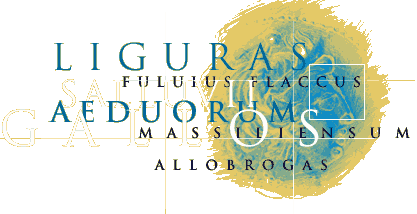- Home
- Gauls and Greeks
- The Gallic populations of Provence
- Writing enters the story
The silence of the Salyens
Around thirty Greek or Latin texts mention the Salyens. These were written over a period of more than five centuries, beginning in the latter 1st century BC. Among the thirteen authors, we can cite the following historians and geographers: Diodore de Sicile (middle of the 1st century BC), Tite-Live (end of the 1st century BC – beginning of the 1st century AD), Strabon (beginning of the 1st century) and Appien (161-169).
No text, monetary legend, or lapidary inscription in Gallic language or alphabet can be attributed to the Saylen people. We are even ignorant of the name of their ultimate fortified city, the name Entremont having originated in Medieval times as "Intermontes".
Faced with the silence of the Salyens, ancient texts can provide data that archaeology cannot. On the other hand, in addition to making ancient traces of culture buried in the earth speak, archaeology also help us to understand, complete, and nuance the writings of ancient authors.
In collaboration with archaeologists, the role of historians is to identify the sources common to ancient geographers and historians, as well as to analyze successive versions of texts in order to identify the particular contribution of each one through time.
Through analyses of texts, historians attempt to identify the primary source of information (first-hand observations, personal interviews, military reports, etc.) and its date in order to reveal its context and political intention. It is thus possible to evaluate the reliability of historic, geographic and ethnographic information.
The authors speak
The information most frequently provided consists of the names of peoples in geographic descriptions or enumerations of Gallic Midi populations, such as that by Pline the Ancient or Ptolemy in the third quarter of the 1st century. The name of the Salyens must have entered into Greek geography through the writings of Posidonios d'Apamée or Artemidore, or, in any case, after the campaign of Marcus Fulvius Flaccus in 125-124 BC.
The texts describe the extension of the Saylen domain through indications of its geographic context relative to mountains, rivers, the coast and Greek Marseilles.
The events described are related to the history of Greece through the intermediary of its colony in Marseilles, but even more so to the history of Rome and its conquest of southern Gaul. The Salyens entered into history when their military defeat against Rome resulted in the end of their autonomy (between 123 and 90 BC).
Far from the citations of the Salyens or the southern Gauls, certain passages of ancient texts on the northern peoples mention practices that have been attested by archaeological evidence in the souther France well before they were revealed in the north. These include the practice of treating decapitated heads as trophies.

